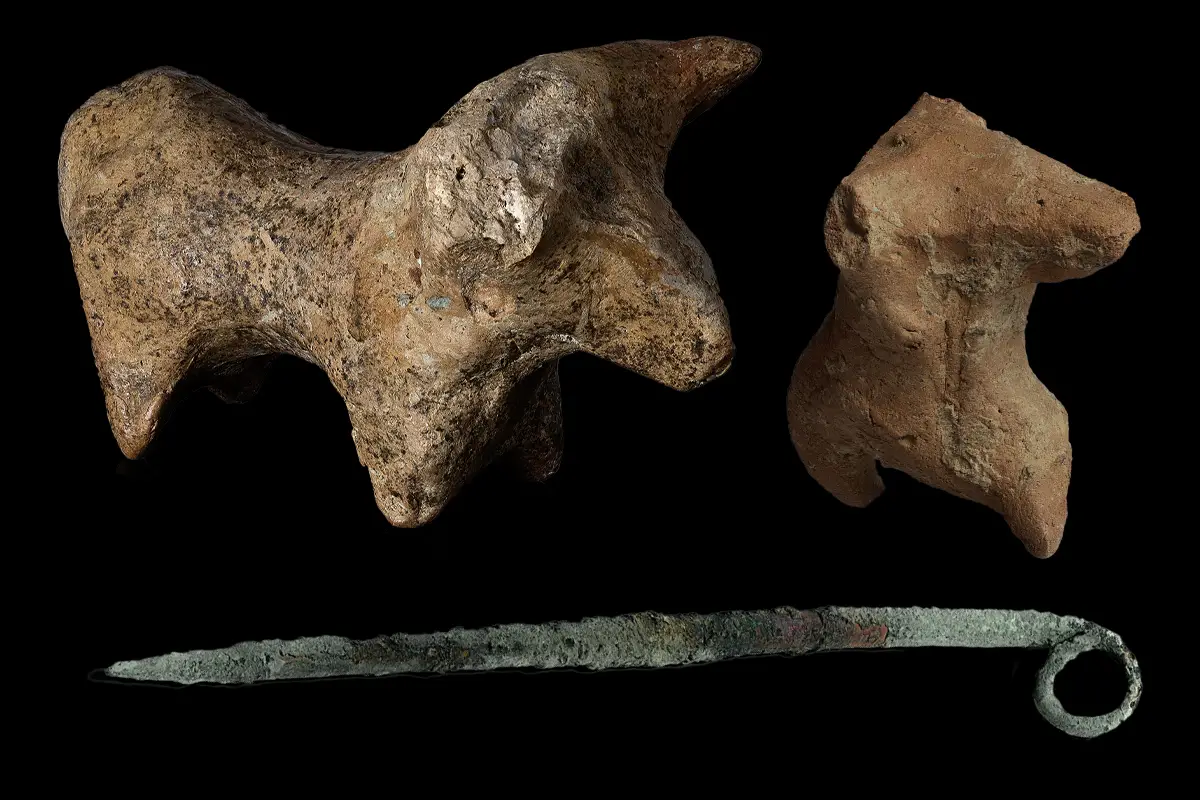Archaeologists from the Institute of Archaeology of the Russian Academy of Sciences have uncovered 13 Chalcolithic-era sites, each yielding a wealth of cultural artefacts and material evidence.
Excavations are in preparations for the R-217 “Kavkaz” highway expansion in the Republic of Dagestan, located in the North Caucasus of Eastern Europe.
The most significant of the newly identified sites is “Dagoginskoye 2,” located near the town of Dagestanskie Ogni, approximately 15 kilometers north of Derbent.
The site contains a wealth of cultural artefacts and material evidence, including residential structures, utility pits, stone and bone tools, ceramics, burials, and a clay figurine of a bull.
According to the archaeologists, the site dates to around the 5th millennium BC during the Caucasus Chalcolithic period.
Of note is the discovery of obsidian tools and the stone objects, a naturally occurring volcanic glass formed when lava extruded from a volcano cools rapidly with minimal crystal growth.
Given that there are no active or dormant volcanoes within the Republic of Dagestan, the discovery suggests a long-distance trading network with the Caucasus Mountains hundreds of miles to the south.
“The site’s scientific value is immense. Never has such a settlement bearing these cultural markers been identified in the North-East Caucasus. The artefacts and structures suggest a previously unknown cultural layer that could redefine the prehistoric narrative of the Caspian Lowland region,” said the Russian Academy of Sciences.
The researchers emphasise the need for a multidisciplinary analysis, including radiocarbon dating, soil and pollen studies, to build a fuller picture of the site’s past. Once complete, “Dagoginskoye 2” may become a benchmark example of Charcolithic life in the North-East Caucasus.
Header Image Credit : Russian Academy of Sciences
Sources : Russian Academy of Sciences





